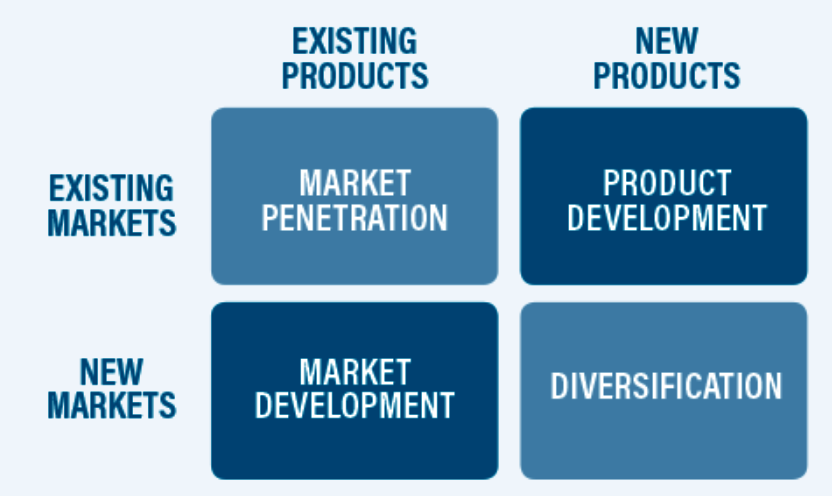
Diversification Delivers Dividends
Expand your mortgage offerings and create new client opportunities
Any good financial planner will tell you to build a diversified strategy when investing in stocks. Why? Because diversification is a sound strategy that increases your odds of success. Stock markets can be volatile and unpredictable. By diversifying your stock portfolio, you reduce the consequences of a misstep. In real estate finance — where the market is always changing — it’s no different.
“Diversifying your mortgage-business strategy now, in the same way that smart investors diversify their stock portfolio, can help you weather and even profit from changes in the real estate market.”
Numerous factors — including interest rates, home prices, housing inventories, employment, the economy, politics, homeowner demographics and new tax laws, to name a few — can move the real estate market in an entirely new direction. It has happened before, it’s happening now and it is sure to happen again.
As a mortgage originator, you can’t afford to be on the wrong side of a changing market. Those who plan for change, profit from change. Those who don’t suffer the consequences of it. That’s why diversifying your mortgage-business strategy now, in the same way that smart investors diversify their stock portfolio, can help you weather and even profit from changes in the real estate market.
Growth strategies
Mathematician and economist Igor Ansoff created the product-market expansion grid while working as a business-planning specialist at aerospace company Lockheed in the 1950s. The “Ansoff Matrix” allows decisionmakers to quickly visualize existing and new markets, then compare them with existing and new products.
The matrix asks those same decisionmakers to consider market penetration, product development, market development and diversification. In corporate circles, the chart is known to be used by many Fortune 500 companies, including Coca-Cola, Philips and IBM. According to Ansoff, businesses can achieve growth through four primary strategies by varying the types of products they offer and the markets they pursue. Although developed for large corporations, the Ansoff Matrix’s fundamental principles apply to companies of all sizes.
A business-growth strategy based on market penetration focuses on offering existing products to an existing market. The objective is to gain a larger share of a market by leveraging a competitive advantage. Unfortunately, the tactics for a market-penetration strategy typically include pricing strategies, promotions, special offers and technologies that are more easily deployed by larger competitors.
Competitors in the travel industry illustrate an excellent example of using a market-penetration strategy to steal market share. Over the past 20 years, travel websites used new technologies, aggressive pricing and promotions to extract market share from small travel agencies. In response, these agencies were forced to focus their business model on travel-planning services that require a higher degree of personalization and experience that consumers can’t get from a travel website. Other travel agencies chose to focus on more specialized business-travel services.
In the aftermath of the market-penetration war waged by travel websites, travel agents were forced to diversify their business strategy to survive. It was a costly mistake that had a profound effect on the travel-agency business.
With the growth of direct, online lenders like Quicken Loans, the mortgage origination industry is starting to feel the effects of large competitors who are using a market-penetration strategy to disrupt and steal market share from independent brokers. Instead of watching their market share erode, independent mortgage brokers have an opportunity to diversify their business now and avoid the consequences of market disruption and increased competition.
Diversification path
Companies that adopt a diversification strategy are focused on achieving business growth through the introduction of new products to new markets. For many companies, a diversification strategy typically requires a high investment in both time and resources to acquire new skills and techniques that provide them with increased security in a more competitive marketplace. Ansoff identified three tactics for diversification.
- Concentric diversification, or leveraging a company’s core expertise to diversify its current products into new markets
- Conglomerate diversification, or the purchasing of another company to diversify
- Horizontal diversification, or the introduction of new products that are unrelated to a company’s core products for existing markets
As an independent mortgage broker or owner of a small brokerage that specializes in residential mortgages, adopting a concentric or conglomerate diversification strategy is probably too risky and too costly to consider. Purchasing another company can be a challenge for smaller businesses and expanding your home mortgage offerings to other markets (e.g., different types of borrowers) would be difficult given the regulatory issues that apply to consumer home loans.
“The simplest path to long-term growth for residential mortgage brokers comes from horizontal diversification — introducing new products into existing markets.”
By far, the simplest path to long-term growth for residential mortgage brokers comes from horizontal diversification — introducing new products into existing markets. This strategy is especially true if you can leverage your existing expertise in residential mortgages and thereby shorten your learning curve. A shorter learning curve improves your chances for success and delivers the rewards of diversification in less time.
Expanded offerings
If you are currently offering consumer loans for residential properties, the easiest way to horizontally diversify your services is to provide similar products to existing markets. This strategy allows you to use your existing experience to expand into other types of mortgage programs for the same kinds of properties.
A simple example of horizontal diversification is to offer mortgages for non-owner-occupied residential properties of one to four units to real estate investors, instead of limiting your services to owner-occupied consumer home loans. The knowledge you have about residential properties and local markets still applies, and the underwriting process is similar, except for the substitution of rental income for the borrower’s personal income.
After you’ve mastered residential investment-property mortgages, you can expand your services to include multifamily, mixed-use and small commercial buildings. It’s an extension of the same horizontal diversification strategy that allows you to continually attract new clients and grow your business by introducing new products to existing markets that are currently underserved.
Smart specialization
When adopting a horizontal growth strategy, it’s smart for smaller companies to narrow their focus on marketplace segments that aren’t already served by larger, more established competitors. Large companies can dominate a market through economies of scale that allow them to reduce their fees and offer lower rates. This competitive advantage favors larger companies and creates a race to the bottom that smaller competitors can’t win.
As in the travel-industry example, the best business-diversification strategy uses specialization (e.g., travel packages or business travel) to avoid competition. For example, focusing your residential investment-property programs on independent real estate investors who don’t qualify for traditional bank loans allows you to avoid competition from banks who either avoid or cannot offer traditional mortgage programs to these types of borrowers.
Specialization also allows originators to differentiate their services and charge higher fees. Unlike loans for owner-occupied residences where commissions are regulated and face stiff competition, originators can earn higher commissions for their ability to source investment-property loans.
Untapped market
To underscore the opportunity offered by diversification, combined mortgages for residential one- to four-unit investment properties, as well multifamily, mixed-use and small commercial properties valued under $10 million, generate hundreds of billions of dollars in loan originations each year. Nearly 35% of the loan applications submitted for these types of properties do not qualify for traditional bank financing. This fallout creates a huge market opportunity for mortgage originators.
Moreover, serving real estate investors provides an opportunity for repeat business. A typical home loan borrower may only take out a mortgage every five years. In contrast, real estate investors and small-business owners typically apply and qualify for multiple loans in the same five-year period.
Numerous factors, including fluctuating interest rates, the demand for housing, political instability, housing inventories, economic uncertainty, employment rates and changing homeowner demographics have a profound impact on housing sales and the residential mortgage industry. As a result, it’s difficult to predict where the industry will be in 30 days, let alone in the coming years.
The mortgage industry is — and will always be — in a constant state of change, making it difficult to determine the “right” business strategy for every market scenario. There are too many variables to consider that originators are unable to control. For these reasons, diversifying your business strategy by offering a variety of mortgage programs to serve the needs of different borrowers is a sound strategy that pays dividends when markets change.
DEFINITION
Ansoff Matrix

Also known as a product-market expansion grid, the Ansoff Matrix is a planning tool that helps companies develop strategies for product and market growth. Broad categories for business growth include market penetration, product development, market development and diversification.
This article originally appeared in the October 2019 issue of Scotsman Guide Magazine.


